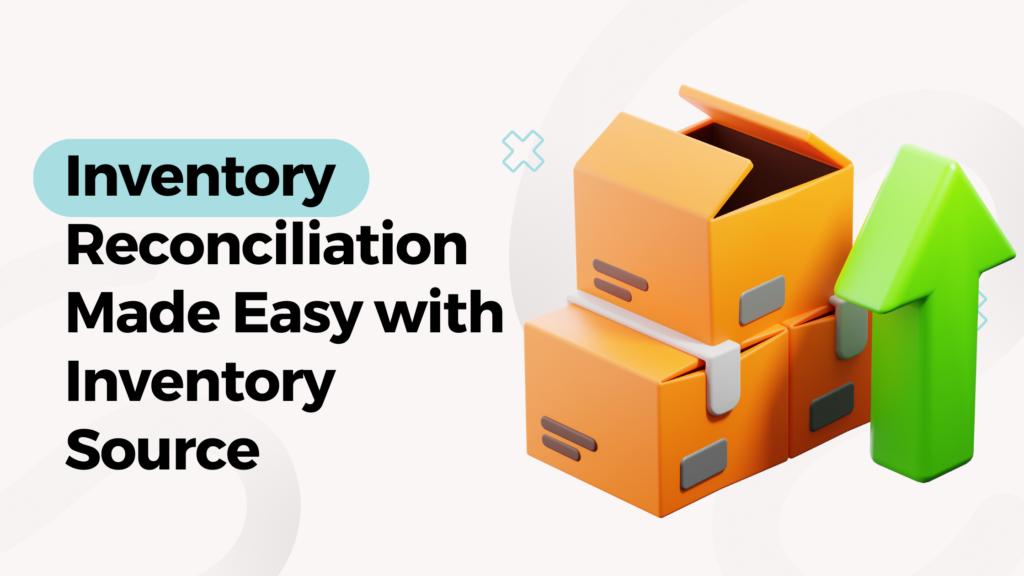Inventory Reconciliation Made Easy with Inventory Source
Effective inventory management is crucial for the success of any business. One key aspect of inventory management is inventory reconciliation, which involves comparing physical inventory counts with records to ensure accuracy. This process is often referred to as inventory data reconciliation, especially when dealing with large data sets and automated systems. By following a systematic process, you can identify discrepancies, understand their causes, and make necessary adjustments to maintain optimal stock levels.
Understanding Inventory Reconciliation
Inventory reconciliation is the process of aligning physical inventory counts with recorded inventory levels. It serves as a crucial tool to reduce discrepancies and ensure accurate stock management. By conducting regular inventory reconciliations, you can identify any deviations and take corrective measures promptly. This proactive approach helps prevent stockouts and ensures customer satisfaction. Now, let’s delve into the five-step process of inventory reconciliation.
Step 1: Check Your Physical Inventory Count
Before diving into your records, it’s essential to conduct a thorough physical inventory count. This involves physically counting each item in your inventory to obtain accurate numbers. Take the time to count and recount your inventory with your team to ensure precision. By establishing a reliable baseline, you can move on to comparing these physical counts with your inventory records.
Step 2: Compare Physical Count with Inventory Records
Once you have your physical inventory count, compare it with your existing inventory records. This step helps identify any discrepancies between the two sets of numbers. Discrepancies can result from various factors such as missing paperwork, human error, miscalculations, unlisted items, or even supplier fraud. By examining all possible causes, you can pinpoint the root of the issue and make the necessary adjustments to your inventory management process. This comparison forms the core of inventory data reconciliation practices.
Step 3: Look at Inventory Deliveries/Shipments Since the Last Reconciliation
To gain a comprehensive understanding of the discrepancies, review your past delivery and sales records. This step is especially important if you’ve conducted previous stock reconciliations. By analyzing these records, you may uncover overlooked discrepancies. Additionally, examining sales and shipment receipts can shed light on any missing inventory. If you’re unable to find any records explaining the discrepancy, theft or fraud may be the cause.
Step 4: Double Down on Discrepancies
After identifying the cause of the discrepancy, create a “stock reconciliation statement” that explains the deviations and updates your inventory records accordingly. This step ensures that your inventory counts align with the actual number of items in your inventory. Use tools like spreadsheets or inventory tracking systems to document and override the previous records. If the direct cause remains unknown, consult with your team to explore further possibilities. Ultimately, reconcile your records to match the physical inventory count.
This method is especially useful in equipment inventory and reconciliation scenarios, where keeping track of valuable assets like machinery or tools requires a highly accurate and detailed reconciliation process.
Step 5: Consistently Reconcile Your Inventory
To maintain accurate inventory management, it’s crucial to conduct regular inventory reconciliations. Establish a schedule that suits your business needs, considering factors such as sales volume, demand fluctuations, and employee availability. Consistent reconciliations minimize inventory shrinkage, prevent stockouts, and save costs in the long run. Ensure that you allocate sufficient time and resources for the process, accounting for any potential delays or interruptions.
Methods for Performing Inventory Reconciliation
Now that we’ve covered the five-step process of inventory reconciliation, let’s explore three popular methods for conducting regular reconciliations.
Seasonal Inventory Checks
One method is to perform inventory reconciliations based on seasonal demand. For example, if you sell air conditioning units, you would conduct a reconciliation in spring to ensure sufficient inventory for the upcoming summer season. Similarly, for heaters, a fall reconciliation would ensure ample stock for winter. By aligning your checks with seasonal trends, you can optimize reorder quantities and accurately set reorder points.
ABC Method
The ABC method prioritizes inventory reconciliation based on value and sales volume. Categories A, B, and C represent different inventory segments, with A accounting for the highest value and sales volume. Allocate more resources and conduct more frequent reconciliations for Category A items, as they have the most significant impact on revenue. By categorizing your inventory and tailoring your reconciliation efforts accordingly, you can optimize your inventory management process.
Random Reconciliations
For businesses that prefer flexibility, random reconciliations offer the freedom to conduct inventory checks based on their own schedule. Whether it’s twice a year, once a year, or even weekly, the key is to have a consistent and regular schedule. Random reconciliations ensure that inventory counts remain accurate without overwhelming your resources. Choose a frequency that works best for your business operations and allocate dedicated time for the process.
The Benefits of Inventory Reconciliation with Inventory Source
While inventory reconciliation is essential for any business, leveraging the right tools can streamline the process and enhance overall inventory management. Inventory Source offers a comprehensive suite of analytics tools designed to optimize your inventory forecasting and stock level optimization.
1. Accurate Inventory Reports
Inventory Source’s ensures accurate inventory reports. Their electronic system provides real-time visibility into inventory counts, allowing you to stay informed about stock levels across multiple locations. With precise inventory management, you can avoid discrepancies, make informed decisions, and provide accurate tax information.
2. Minimize Risk of Damage or Theft
Regular stock reconciliations help minimize the risk of damage or theft. Inventory Source’s state-of-the-art facilities are equipped with advanced security systems and trained personnel to ensure the protection of your inventory. By partnering with Inventory Source, you can have peace of mind knowing that your inventory is secure.
3. Up-to-Date Safety Stock Levels
Maintaining up-to-date safety stock levels is crucial to avoid stockouts and meet customer demand. Inventory Source’s software includes built-in reorder point formulas that automatically generate alerts at the SKU level, ensuring you replenish your inventory at the right time. Furthermore, their fulfillment centers enable you to distribute your inventory strategically, reducing the risk of stockouts across multiple locations.
4. Demand Forecasting
Inventory Source’s up-to-date inventory counts, combined with their historical sales data, enable accurate demand forecasting. By leveraging their forecasting tools, you can project future demand, optimize your inventory levels, and ensure you meet customer expectations. This proactive approach helps you stay ahead of the competition and boost overall business performance.
5. Comprehensive Solutions
Inventory Source offers a comprehensive inventory management and fulfillment solution. By leveraging their robust software, you can streamline your inventory reconciliations, automate processes, and focus on strategic activities that drive business growth. With their vast experience and reliable support, Inventory Source is a trusted partner for businesses of all sizes.
Conclusion
Inventory reconciliation is a crucial process for maintaining accurate inventory records, preventing stockouts, and ensuring customer satisfaction. By following the five-step process outlined in this guide and leveraging Inventory Source’s solutions, you can streamline your inventory management and drive business growth.
Implementing regular reconciliations, choosing the right method for your business, and utilizing tools that provide accurate data and insights will help you optimize your inventory levels and stay ahead of the competition. Take control of your inventory management today with Inventory Source’s powerful analytics tools.






